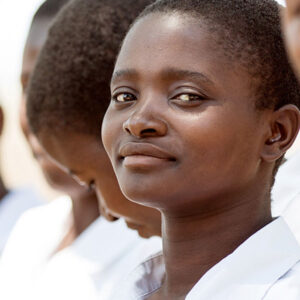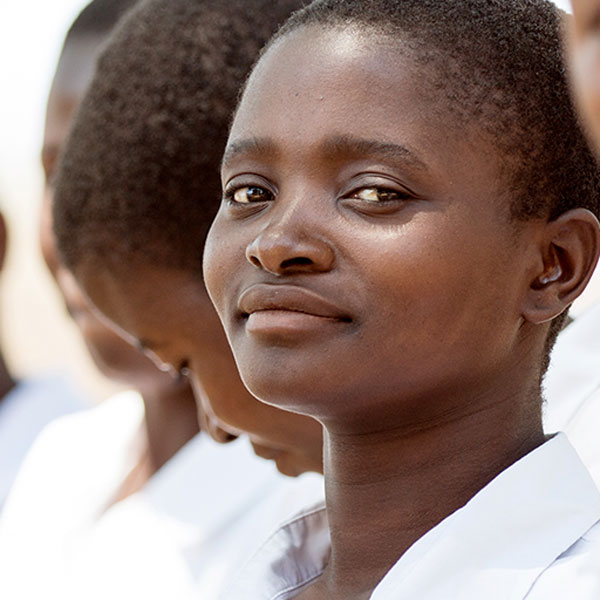
This blog was authored by Alana Kolundzija, Founder and Principal Consultant, Collective Impact; Margaret E. Greene, CEO, GreeneWorks and Board Member, Equimundo; and Giovanna Lauro, Vice President of Programs and Research, Equimundo
Today, on the International Day of the Girl Child, we’re called by the United Nations to stand with girls and to support them to take charge of their futures, focusing on the theme, “With Her: A Skilled GirlForce.” While there are many ways we can – and must – support girls to realize their full potential, we believe that one issue which deserves our urgent attention is eradicating child marriage. Around the world, an estimated 1 in 5 girls is still married before she is 18, and over 650 million women alive today have been married as children.
Given the scope of this problem, it’s surprising that only relatively recently did child marriage cease to be treated as a niche topic. Over the past decade, the international development community has increasingly recognized the links between child marriage and a range of development priorities from human rights to social and gender justice, public health, and poverty alleviation. Indeed, child marriage is most decidedly not a phenomenon that can be separated from other aspects of girls’ and women’s lives: it’s a concern in and of itself as well as a vehicle to address other aspects of a larger feminist mandate and women’s rights more broadly.
To end the practice, we must understand and dismantle the gendered systems of inequality which reinforce child marriage from all angles: namely, cultural norms around sexuality as well as political and economic structures.
Around the world, cultural constructions of sexuality play an essential role in defining what it means to be a ‘good’ woman and a ‘good’ man. Normative expectations about sexuality create a double standard that, although it manifests itself differently in various settings, typically encourages sexual freedom for men and demands sexual restraint from women. The patriarchal moral code subordinates women by valuing their purity and passivity above anything else while men are urged to assert their dominance and promiscuity.
The ripple effect of the sexual double standard extends across girls’ lives, constraining them and limiting their prospects. Anxiety about girls’ virginity and sexual purity drives child marriage, as research from GreeneWorks shows; out of a desire to protect girls and women and preserve their purity, their mobility is constrained and they have limited access to social networks and opportunities and services – including schooling, work, and health services – outside the home. Girls are often not authorized to know and talk about sex and do not receive sexuality education, leading them to defer to their male partners and to come to sex unprepared. Girls’ and women’s sexual pleasure is neglected, and sexual acts center on men’s pleasure.
These cultural ideas of sexuality are a core driver of child marriage by encouraging men’s preference for younger, more malleable female partners – and girls’ and families’ preference for older male partners better able to fulfill the role of providers. This recognition – alongside the reality that men often play a role, as family members, community, government, and religious leaders, in the decision-making process regarding girls’ marriages – has highlighted how misguided it is to focus exclusively on women and girls in programs that work to end child marriage. Masculinity and femininity are defined in relation to one another, making it impossible to achieve gender equality unless we transform gender norms related to both men and women.
Equally important are the structural drivers and political-economic factors that contribute to child marriage. Just as constructions of masculinity and femininity can help to shape preferences for young, malleable wives and drive significant spousal age gaps, economic circumstances in which girls are often considered economic liabilities because of the expense they impose on families through dowry costs, as well as legal discriminations (such as restrictions around women’s employment and property rights, for example) can also expand the large age gap between spouses. In these contexts, girls cannot find meaningful opportunities in society for self-realization beyond fulfilling their role as wives and caregivers – as shown by Equimundo’s research in several settings.
Because of these complex, interwoven dynamics, strategies tackling individual attitudes and behaviors must be paired with effective legal and policy frameworks to ensure that girls stay unmarried, and that married girls receive support.
For change to be sustainable, Equimundo advocates for the incorporation of a gender-transformative lens in child marriage prevention and response, questioning deep-seated norms regarding what it means to be a man and woman, and the related gender power dynamics. To this aim, we have developed evidence-based programmatic tools, such as those aiming to engage fathers as more equitable and nurturing caregivers to promote gender equality in the life of a child since before their birth. We have also conducted research with a focus on transforming masculinities in several settings where the practice, albeit present, is largely undetected or not recognized as an issue, as in Brazil and Georgia.
These efforts underscore our belief that in the global movement to end child marriage, thoughtfully engaging men and boys offers an enormous opportunity to improve the lives of girls, women, and men and boys themselves. GreeneWorks and Equimundo’s collaborative research has shined light on the diverse ways it is possible to work with boys and men in this global effort.
Building the feminist future of manhood – by engaging fathers, brothers, grooms and future grooms, male religious and traditional leaders, community members, and government officials to challenge gender power dynamics and harmful gender norms – has the potential to amplify the impact of current prevention and response efforts, and represents an important investment in securing their sustainability. It can enable us to systematically challenge both the inequality and discrimination faced by girls and young women who marry as children, as well as to address the difficulties experienced by boys who marry as children, and to improve a host of health and development outcomes.

